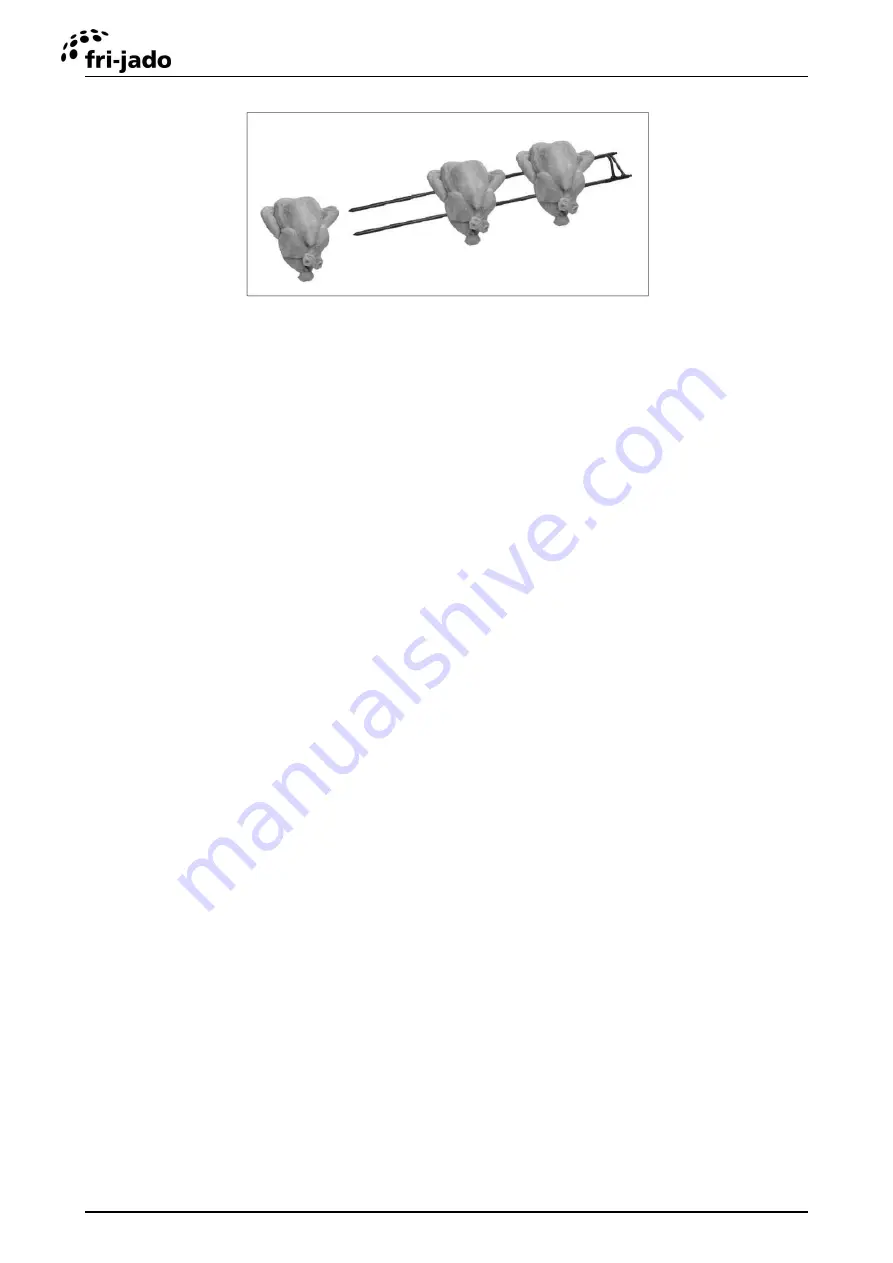
TG
EN
13 / 24
For preparing chicken or any other poultry, you can work as follows:
1.
Insert one point of the meat fork through the chest at the position of the wings. Insert the
other point through the drum
sticks. Don’t forget to include the wings.
2.
Leave some space between the products, for an even exposure and browning.
3.
Put the meat forks onto the rotor disks in such a way that during grilling the chicken
breasts face the operator.
4.
Put the points of the meat forks through the appropriate holes in the rotor.
5.
The other end of the meat forks must be put through the corresponding holes in the
opposite rotor disk.
4.2.2 Loading the rotisserie using V-shape spits (accessory)
If you are using V-shape spits act as follows:
1.
Place the skewer into the small outside hole on the rotor end plate on your left (as you
face the oven). The back of the V-shape spit should be pointing towards you.
2.
Fit the other end on the spit into the small corresponding holes on the rotor end plate on
your right (as you face the oven).
3.
Make sure the spit is level. If spit is not level make sure you are using the correct holes
on the rotor end plates.
4.2.3 Loading the rotisserie using meat baskets (accessory)
If you are using meat baskets, act as follows:
•
Stick the ends of the meat baskets through the appropriate holes of the rotor disks.
Whilst loading the unit with meat baskets, you must see to it, that the rotor gets evenly loaded, so
that the mass of the products is evenly spread over de rotor, causing an equal balance.
Also see to it that no meat parts are sticking out of the baskets.
4.2.4 Loading the rotisserie using chicken racks (accessory)
When using chicken racks, you can use the principle as described in section 4.2.3.










































